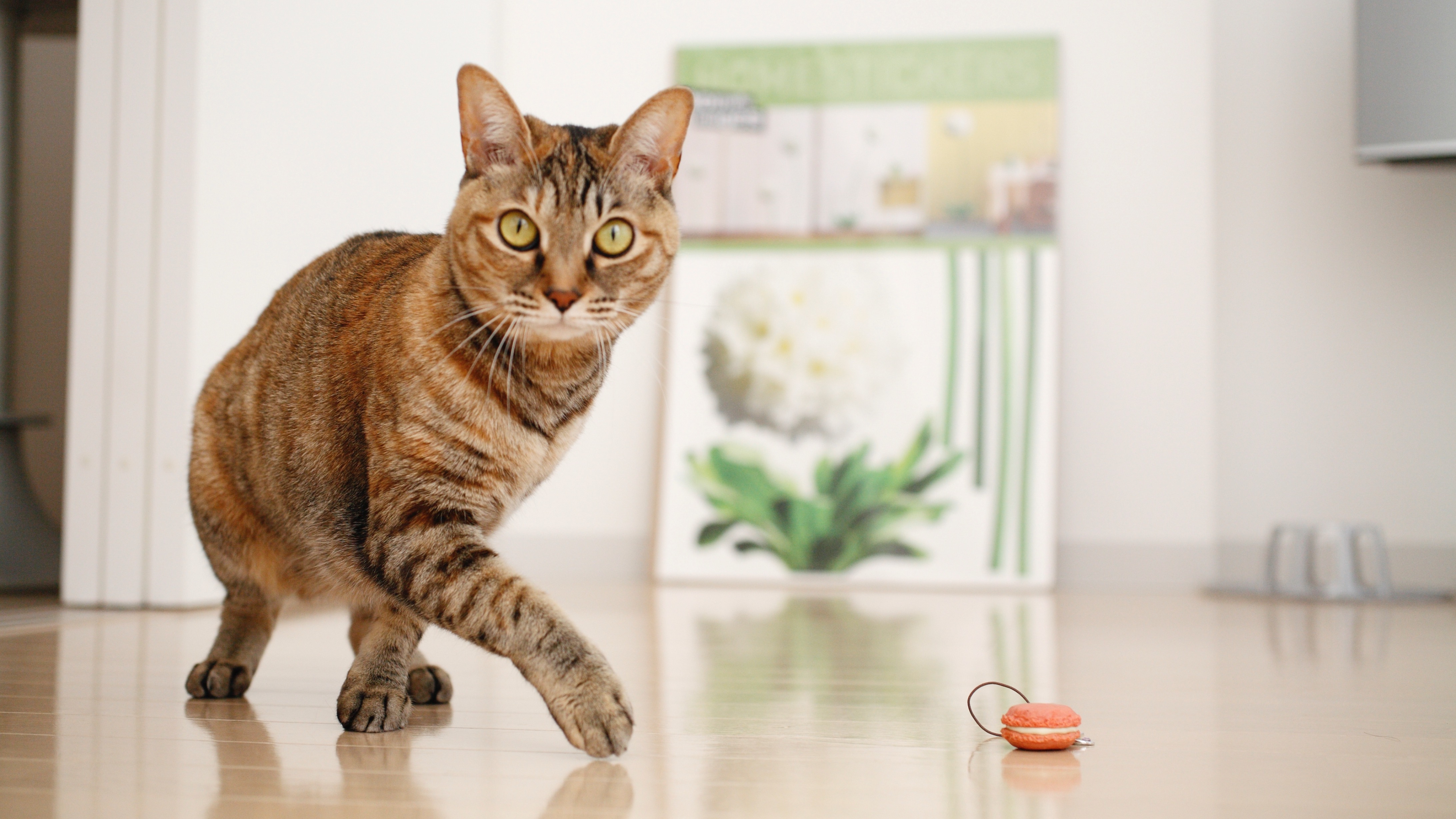
Do you find yourself running round the house with a piece of string or investing in a range of interactive cat toys only to find that your kitty doesn't seem the least bit interested in playing?
Of course, cats are more solitary animals than dogs, and they sleep a lot too, but if your cat isn’t interested in playing it doesn’t mean it’s time to put the best cat toys away and simply give up - especially given the range of mental and physical health benefits that a good play session can offer your feline friend.
There are ways to encourage your cat to become more interested in playing, which will give them both physical and mental stimulation – here’s what certified cat behavior psychologist Saba Sayyed, who goes by A Cat Psychologist, has to say about getting your kitty excited for playtime.
“Don’t leave their toy out all day!” Sayyed begins, explaining that you should keep your cat’s toys hidden and bring them out only when you play with them – which should be around once or twice a day.
“In nature, cats have millions of bugs and birds to hunt on,” she continues. “However, at home, we keep playing with them with the same toys, and that’s why our cats lose interest in playing.”
If you only bring your cat’s toys out once or twice a day, it makes them more exciting. In Sayyed’s video, she shows one of her cats, Rya, playing with a broken toy – even though she doesn’t often show interest in playing. She explains that she makes the toy move like a bug or fly. This taps into the cat’s hunting instincts, and even though the toy is broken it’s clear that Rya gets plenty of excitement from playing with it.
If you aren’t sure how to play with a cat to keep them interested, remember that it’s important to encourage their natural instincts. Grab a toy your cat hasn’t seen in a while – it doesn’t have to be expensive or even in complete working order – and encourage them to stalk, pounce, and chase.
Cats love movement, so a bunch of toys just sitting on the floor won’t be particularly eye-catching for your kitty. Rather, dangle toys at your cat, or throw them to encourage their chasing instinct.
And remember, every cat is different. Just as one cat might prefer a different food to another, some cats will like different types of play more than others. Why not take some time out to experiment, and see which types of play really get your cat excited?
And do your best to take some time every day to play with your cat. It might be tricky if you have to juggle things like work and childcare too, but even two, 15-minute sessions can work wonders. If there are multiple people in your household, you can divide those up, too, so that you all get a chance to join in the fun!







